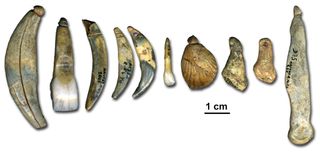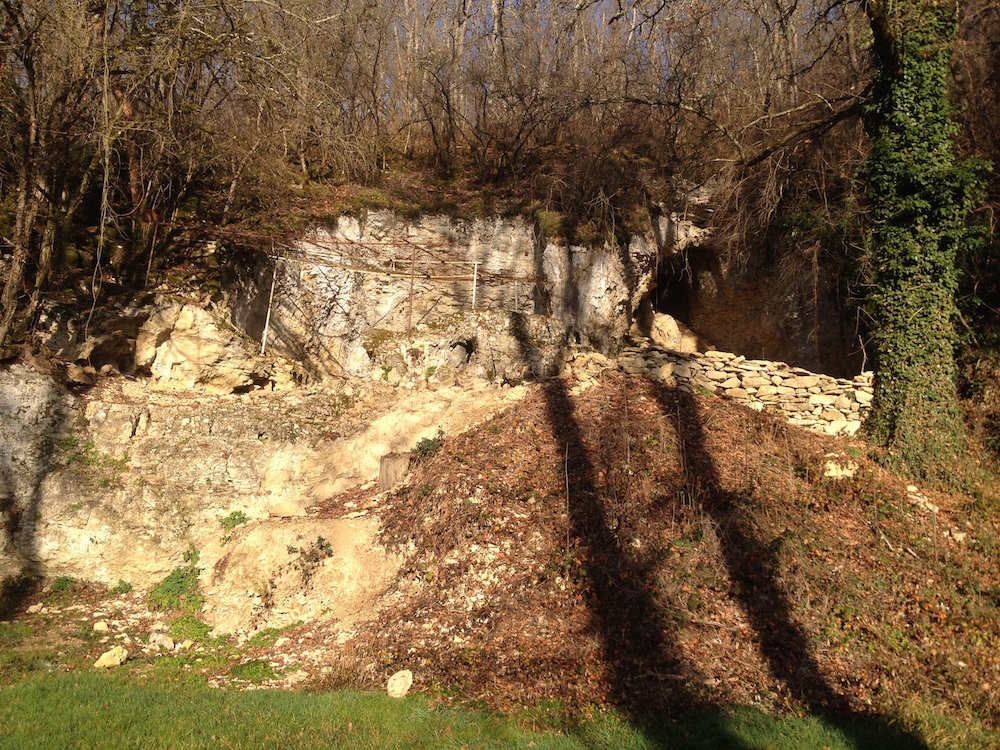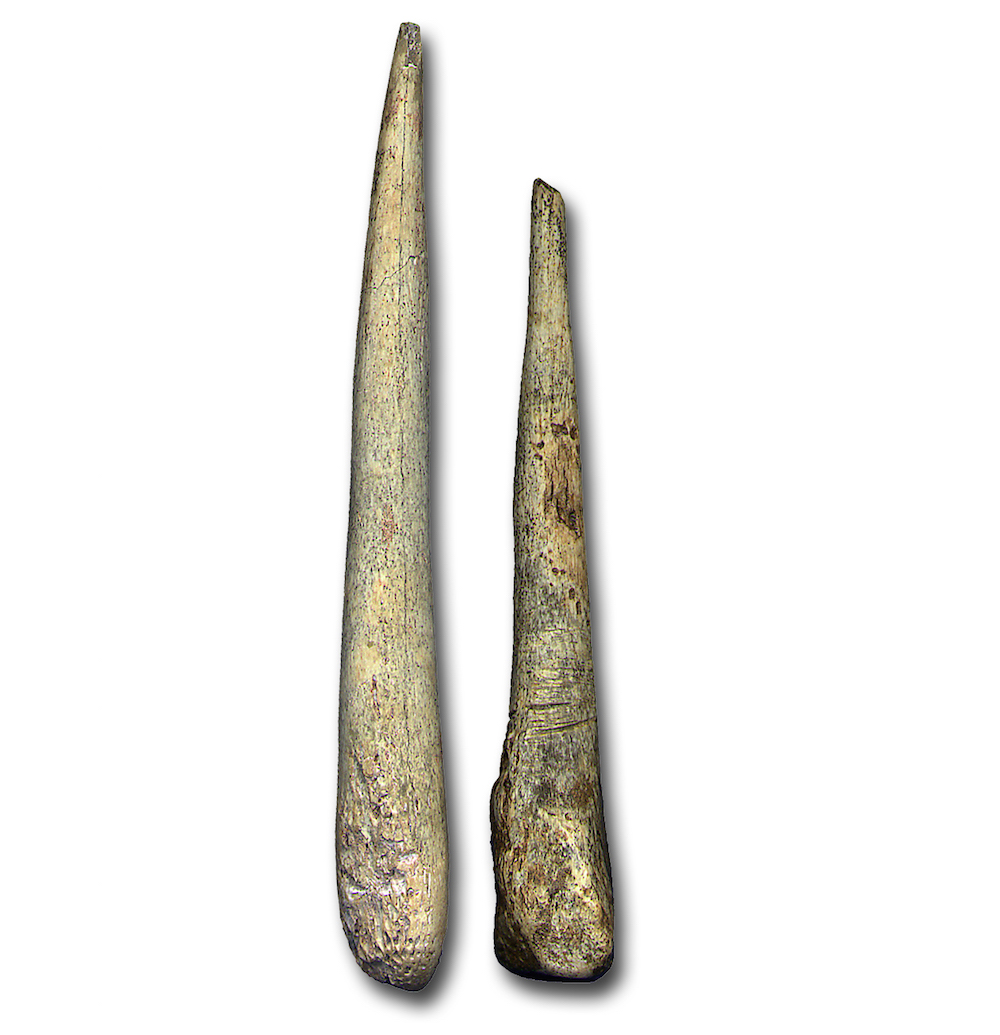How To Tie Animal Bones And Teeth Jewelry
Neanderthals Fashioned 'Jewelry' Out of Animal Teeth and Shells

Virtually 42,000 years ago, the Neanderthals — the stocky cousins of mod humans — fashioned tiny jewelry chaplet from animal teeth, shells and ivory, a new report finds.
The finding is momentous, as it suggests that Neanderthals could engage in symbolic expression — the ability to make art — before they went extinct about 30,000 years ago, the researchers said.
"Nosotros now know that some of the last Neanderthals in Europe made artifacts that we practise non run into in Neanderthal textile culture before that fourth dimension," said Frido Welker, the study's pb researcher and a doctoral student of man evolution at the Max Planck Plant for Evolutionary Anthropology in Germany. [In Photos: Neanderthal Burials Uncovered]
The discovery is based on the artifacts and bony remains found in the Grotte du Renne cavern in Arcy-sur-Cure, an area located virtually 125 miles (200 kilometers) southeast of Paris. Later the cave was discovered in 1949, its contents were dated to about twoscore,000 to l,000 years agone, a period during which mod humans were sweeping beyond Europe and displacing the Neanderthals, the researchers said.

At commencement, anthropologists credited the beads to the Neanderthals, only the prevailing view of Neanderthals was that they didn't take the brainpower to craft such items. That prompted many experts to wonder whether the excavation team had made a fault in attributing the beads to Neanderthals, when possibly mod humans had fabricated the ornaments, co-ordinate to Phys.org.
The researchers on the new report set out to respond that question once and for all.
"We wanted to know whether an archaeological civilisation called the Châtelperronian was fabricated by Neanderthals or modern humans," Welker told Live Scientific discipline in an email. "If they were modern humans, they would be some of the primeval modern humans on the European continent, and might take played a part in Neanderthal extinction."
Poly peptide investigation
The aboriginal bone fragments in the cave did not have enough preserved DNA for a thorough analysis, and then the researchers turned to another identifying cistron: proteins.
They used several mass-spectrometry techniques to study the proteins preserved in about 200 ancient bone specimens from the cave, Welker said. The mass-spectrometry methods were key to the experiment, he added. That's because proteins are made out of amino acids, which are joined together on a cord.

Each amino acid has a dissimilar weight, or mass. "By using massspectrometry, we tin can constitute the unlike sequences of amino acids in our sample and compare that with existing protein databases," Welker said.
They establish that, although the bulk of the bone fragments belonged to horses or aurochs (wild cattle), some were clearly hominin, a group consisting of mod and extinct human species, Welker said. Moreover, the researchers identified an amino-acid sequence that was unique to Neanderthals, proving that the bones did not vest to modern humans or the Denisovans, an extinct homo relative, he said. [The 10 Biggest Mysteries of the Start Humans]
Results from additional testing methods, such as direct radiocarbon dating and ancient mitochondrial DNA analysis, also hinted that the bones belonged to Neanderthals, he said.
"Very young infant"
One of the proteins found in the Neanderthal basic was a type of collagen found but in growing bones. In addition, the specimen had a high proportion of a certain kind of nitrogen isotope (a variation of an element, but with a different number of neutrons) that is associated with breast-fed infants.
"We identified aboriginal proteins in these Neanderthal bone specimens that indicated they belong to a very young infant, probably around the age of 1 yr erstwhile," Welker said.
The baby likely lived effectually the same time when the Neanderthals crafted the 1.ii- to two.iv-inch-long (3 to half dozen centimeters) beads, the researchers said. However, they added that they "don't know if they [the beads] belong to a single 'necklace' or were worn in dissimilar means, and they were institute in different areas of the Grotte du Renne," Welker said.
"It is at present up to the archaeologists to effort and explain how this happened," Welker said. "Did they learn [bead making] from modernistic humans? We know they interacted, equally there is genetic interbreeding between Neanderthals in modern humans in our DNA. Or maybe they imitated, or invented such artifacts themselves, independently?"
It'southward also possible that the Neanderthals got the beads from modernistic humans, possibly every bit a courting souvenir, according to Phys.org.
The findings were published online Sept. sixteen in the journal Proceedings of the National Academy of Sciences.
Original article on Live Science.
Source: https://www.livescience.com/56268-neanderthals-made-jewelry-beads.html
Posted by: browndider1991.blogspot.com

0 Response to "How To Tie Animal Bones And Teeth Jewelry"
Post a Comment